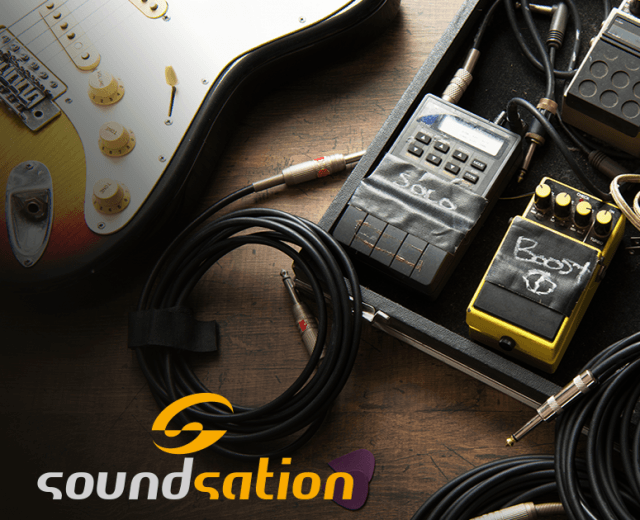This article is dedicated to digital technologies applied to effects and amplification for the electric guitar. We will start from the dawn of the information technology and arrive to the birth of the first musical digital products.
To get an overview on the electric guitar and its amplification development in the first half of the 20th century, please read the article about tube amps. Here we are going to talk about digital amplifiers.
Substantially, there are four kinds of guitar amplifiers:
- tube
or valve amps
- solid
state amps
- digital
or modelling amps
- hybrid
amps
In this first part of the article we’ll
concisely and distinctly deal with:
- Prelude of the digital era
- Relay based information technology
- The way to miniaturisation
- Digital for guitar players
- What is a digital
processor?
In the second part of the article about digital amplifiers
we’ll deal with:
- Physical modelling
- Digital power amps
- Practical use
- The evolution continues
Prelude of
the digital era
It may seems curious, but, to find the
first footprints of a path that seems to belong to our days only, we have to go
back very far. Let’s just mention seventeenth century “
computer specialists” such
as Blaise Pascal or Gottfried Leibniz, and English man Charles Babbage’s
attempts to make mechanical computers based on punch cards for weaving machines
in the nineteenth century. Finally, a great and somewhat obscure mathematician
without a degree took care of “translating” human logical mechanisms in algebra:
George Boole.
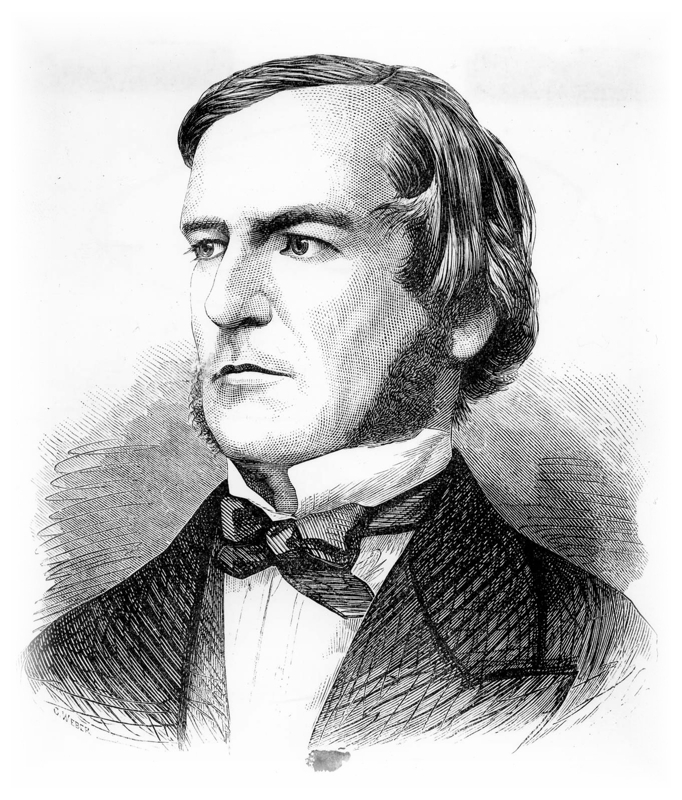
By the half of the eighteenth
century Boole build a mathematical system called
boolean algebra. Instead of the usual math operations (addition, subtraction,
etc), in this system operators such as AND, OR and NOT are used; the only two acceptable
values are True and False, also represented as 1 and 0.
A curiosity: in this mathematical
scope the operator
BUFFER was also
defined; it leaves what is received passing through unvaried: does this tell
you anything?
Relay based
information technology
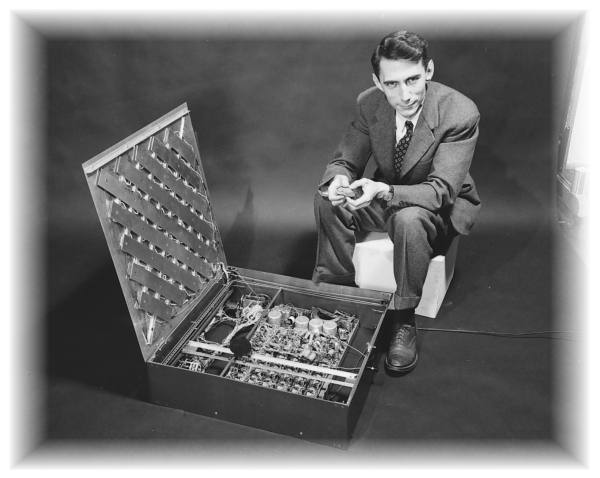
Let’s go ahead in big digits, um… steps to the ’30s of the twentieth century. While contemporary information technology fathers as Alan Turing were already at work, in 1938 U.S. mathematician and engineer Claude Shannon was processing the studies of Japanese NEC researcher Akira Nakajima and accomplishing a Master’s degree in Electronic Engineering at the MIT (Massachusets Institute of Technology) with the thesis A Symbolic Analysis of Relay and Switching Circuits . He applied boolean algebra concepts to electro-mechanical relays – for which the only two possible states are True/False (On/Off) – thus starting the digital circuits design and the digital communication of information. His bulky electro-mechanical circuits made use of relays as On/Off switches (who has already read our article about solid state amplifiers will start to understand…) following software instructions. Bell Labs company – where Shannon worked – took advantage of the study for telephone networks. Shannon also was the first one to shrink the term digit and talk about bit, the elementary digital unit that, by 8, makes one byte.
A curiosity: quickly working to transmit
information, relays heated up a lot.
Bugs
disgracefully perching on them suddenly died. For this reason a cleaning or debug was needed from time to time!
The way to
miniaturisation
The first electro-mechanical computers
were followed by military tube ones. Until now we have been talking about very
large sizes. In 1954
Texas Instruments started mass-producing transistors. In 1968 Italian physicist Federico
Faggin
studied for Fairchild a technology that made it
possible to insert several transistors and components in one single
integrated circuit (IC; cf the image of Faggin’s
first IC).
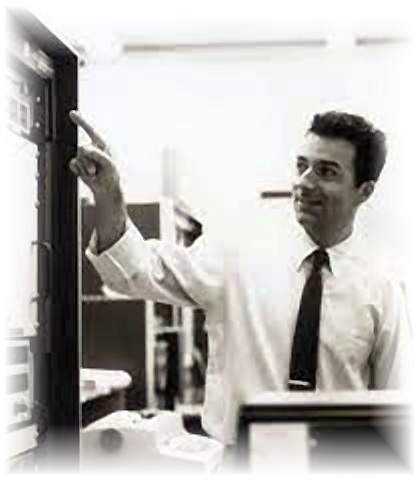
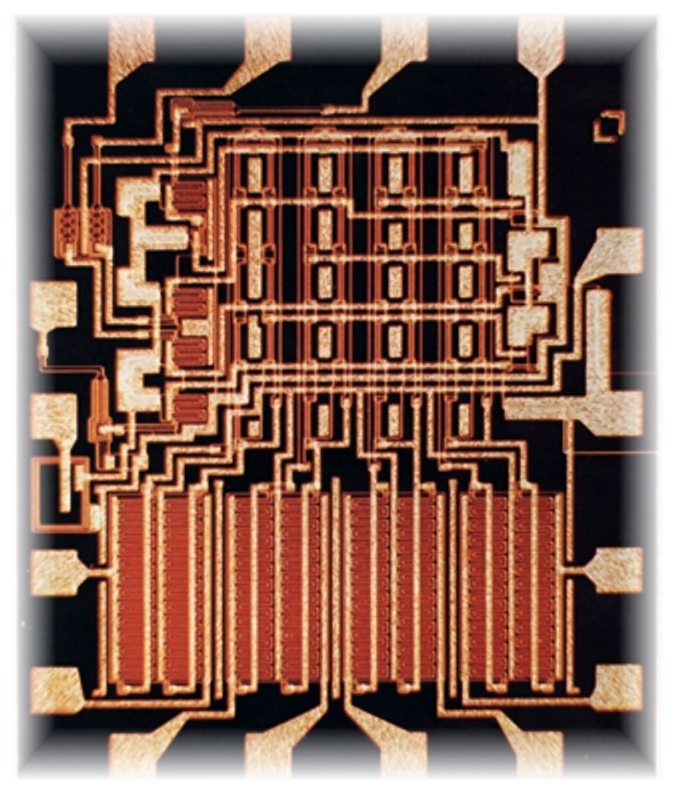
Since then the miniaturisation race has never stopped, taking all the progressive
advantages in designing, size and cost reductions. We should also remember that
every miniaturisation stage coincide with an increase in processor speed; in
fact, since the internal cells are nearer every time, the distance the signal
has to cover is shorter.
The foundations of digital effect generators for guitarists
were implied in what we have briefly described. Their electronics do not give
an analogue treatment to the electric signal (continuous in time) but a digital
one, converting it in a
binary code (0-1),
therefore in data that can be managed and modified by a written and saved software.
The analogue to digital transformation process is known as
A/D conversion. Due to most of afterwards devices, an analogue
signal is again needed after digital processing; this is obtained converting
digital data by means of a final
D/A conversion.
Quality of A/D and D/A conversions is connected to two values:
sampling frequency in kiloHertz and resolution in bit. Since the ‘80s,
starting values of
44,1 kHz 16 bit (the
standard for audio CDs) have been improving up to
96 kHz 24
bit
of current effects and recording devices.
Digital for
guitar players
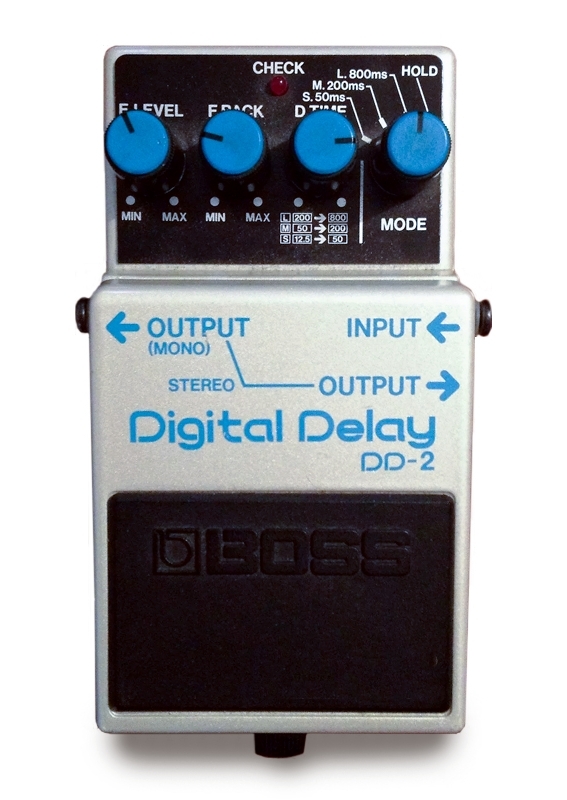
First digital implementations for
guitar players are found in some ’80s effect pedals (the Boss DD-2 delay was
the first one in 1984). In that decade and in the following one
rack effects appeared and increased in
number and types; at the beginning they mostly were
delays and reverbs, increasingly
more powerful and efficient, with rooms, halls and delays recreations progressively
more accurate thanks to powerful processors, often proprietary, and more
affordable memory banks.
Preamplifiers
and multi-effects (from DigiTech, Zoom,
Art, Rocktron and other manufacturers) were assembled inside a single chassis to
which the guitar was connected, while the output was send to a power amp and a
cabinet, even in stereo, or directly to a mixer or recorder if the machine was
equipped with a
direct output and a cabinet simulator. [In the pictures: 1993
DigiTech GSP 2101 and a basic multi-effect algorithm; note dedicated
dry path for input analogue signal].


This was a complete and complicated
arsenal guitar players could manage thanks to the birth of the
MIDI (Musical Instrument Digital Interface) protocol, designed with the
backing of big Japanese keyboards manufacturers.
What is a digital processor?
A digital processor is an electronic digital circuit that, after converting
the guitar
pickup signal
in binary code, allows its manipulation: distortion, equalisation, compression, reverb
and many other effects, both dynamic and aesthetic, are added to the original signal
according to musician’s desires and machine capacity. After processing, the
result is reconverted – with some approximation – in an analogue signal to be send
to the devices at the end of the signal chain: the
power amplifier (usually a solid state one) and the loudspeaker.
In digital multi-effects a fundamental technical solution is desirable:
the split of analogue signal and digital flow in two parallel paths, that are
combined again at the output. Compared to a tout court code conversion of the
input signal, splitting the processes allows to keep the appreciated qualities
of analogue signals (referred to electric guitar), and take advantage of mixed
effects at the same time. The arrival of amplifiers with parallel
effect loops made this solution no more essential,
being the mixing directly available at the loop stage.
A great evolution in digital processors is represented by the
arrival of
digital simulations (calling
them
emulations is not precisely
correct) of amplifiers, cabinets and effects, initially thanks to software, dynamic
and tone nets (preamp, EQ, compression, etc); afterwards, thanks to
digital samples, though not for guitar use.
It’s not over…
In the second part of the article we’ll
go to the guitar
digital amplification
core, talking about integrated machines, digital amplifiers and simulation software with skills not
predictable just some years ago. Well, the best is yet to come!
References
Paul Nahin,
The Logician and the Engineer: How George
Boole and Claude Shannon Created the Information Age
, 2013 Princeton
University Press
Various, Plug In – suppl. to Axe - Periodico per chitarristi no. 35 , 1999 Edizioni Palomino
